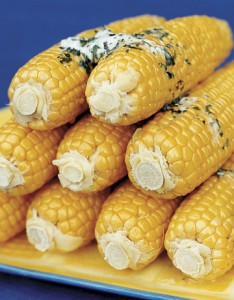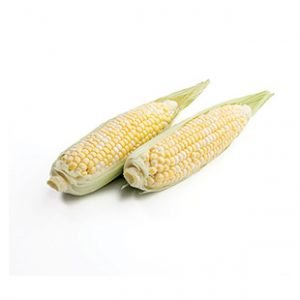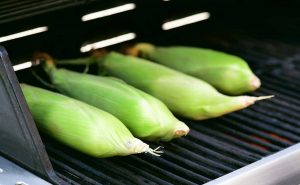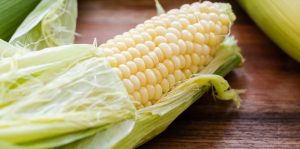One of the great delights of summer is roasted corn on the cob. Drenched in butter, a bit of salt, and maybe a little cayenne pepper, munching sweet corn is a delicious experience. The hard part for many people is choosing the right ears that will be ripe, sweet and wonderful. You just have to be prepared with a few simple tricks.
Only buy fresh corn in season.
That might seem obvious, but consumers today expect absolutely everything they might want be available in the local grocery. The further the corn has to travel, the less likely it is to be any good. Many grocery stores work out deals with local farmers to supply them with bushels of sweet corn direct from the farm. If you really want corn on the cob out of season, go for the frozen kind.
Never buy packages of pre-shucked corn on the cob, the ones that are completely or partially shucked reveal the kernels under the cob’s handy packaging. Corn, like most fresh produce, begins to deteriorate almost immediately due to exposure to air. Stores often use that method to sell corn past its prime by removing the tell-tale husk. You might be able to get away with not shucking if you’re just cooking for yourself and cooking the corn tonight. But otherwise, go for the full ears of corn still nestled in their papery coat. Never shuck your corn more than a couple of hours before cooking and eating.
Check the silk
Silk is what we call the pollenating strands sticking out of the top of the ear from inside the husk. If you pull back the husk, you will see that the silk strands run down between the kernels. The better looking the silk, the better and fresher the corn inside. Look for the palest silk available. If the silk is brown or black, dried out or matted, it’s older than what most fresh corn should be. Also, grocers rotate the stock, meaning the older stuff is closer to the front and on top so it might get chosen first. The fresher stock is toward the back and underneath.
Look at the Husk
The husk should be green and firm, not dried out or turning brown. DO NOT peel back the husk to look at the corn. It damages the produce for the next person.
Hold the husk in your hand as you examine it. Feel its weight. It should feel heavy for its size. That indicates there is lots of water in the kernels, which means it’s fresh. Also, feel around the cob inside the husk. It should feel full without any gaps or under developed kernels.
You will likely have to go through several cobs before you find the good ones you want. The extra effort is worth it.
Cooking and storing fresh corn on the cob
When you get home, place the corn in your refrigerator uncovered still in the husk. If you used a plastic bag at the store, take the corn out before storing as the bag will encourage mold. Steaming the corn works best. There are a couple of good ways to do that.
If you shuck the corn, do not boil them. Boiling will take the flavor out of the corn. Place the cobs upright in a pot on a steamer basket with a bit more than an inch of water in the pot. Steam the shucked cobs for 10 to 12 minutes.
If you want to grill the corn, soak the cobs in their husks and place over the lowest heat on the grill to cook using indirect heat.
The Best, Easiest, Fastest Way to Enjoy Corn on the Cob
When it’s time to cook your corn, forget the pot. This technique uses your microwave. Corn comes in its own wrapper, so make use of it. Place the unshucked corn, husk and all, into the microwave. Set it for three to five minutes depending on how many ears you have inside. The corn will naturally steam itself within the husk. When it’s done, use a clean pot holder to hold the hot ear and pull off the husk. Try to grab as much of the silk as you can. The strands will come loose easier after cooking.
And that is all there is to it. Those with dentures might want to cut the kernels from the cob. It will still taste better than corn from any other source. We like lots of unsalted butter and a good sprinkling of kosher salt on our ear of corn, but the rest is up to you and your taste. Enjoy this summer bounty while it lasts.



